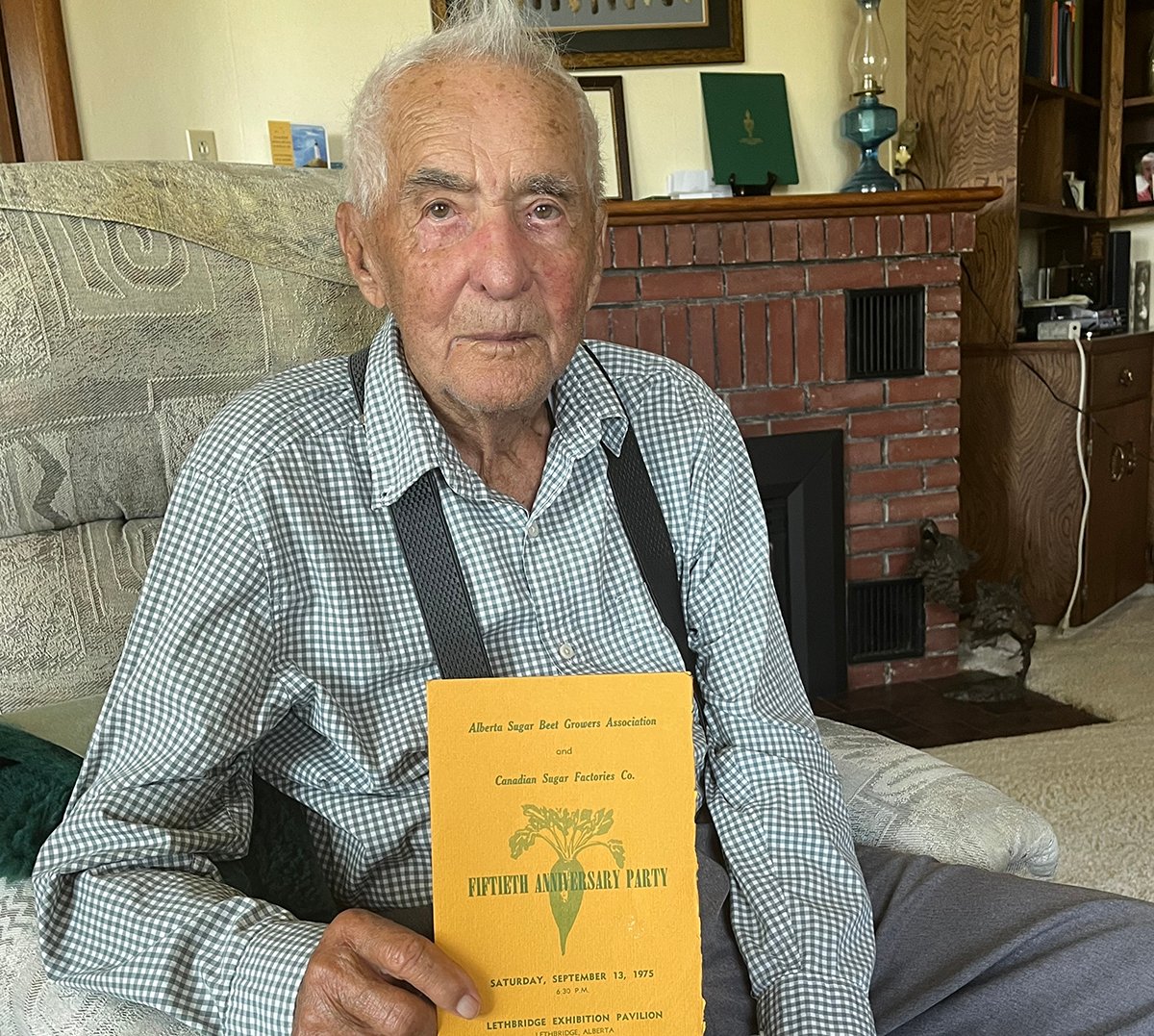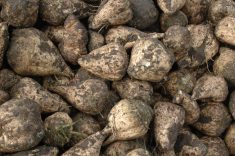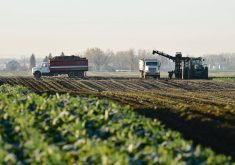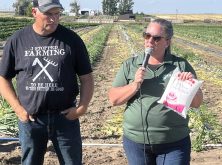Glacier FarmMedia – From the war-torn skies of Europe to the farm fields of southern Alberta, Burns Wood has seen a lot in his life.
The last surviving Second World War veteran from the Taber, Alta, area, Wood flew planes for the Royal Air Force, targeting from factories and other strategic locations.
Wood, who is now 103, participated in Taber’s 80th anniversary of VE-Day this past May, marking the defeat of Germany in 1945.
Read Also

Canola oil transloading facility opens
DP World just opened its new canola oil transload facility at the Port of Vancouver. It can ship one million tonnes of the commodity per year.
Now, he is celebrating another type of history — that of southern Alberta’ sugar beet industry, in which he began working after returning to the family farm after the war.
During the war, the Canadian government incentivized maximum agricultural production. Alberta responded by growing more sugar beets than ever before — a record that still stands today.
Alberta Sugar Beet Growers is celebrating its 100th anniversary this year, and Wood served on the board from 1952-80, including as vice -president and president.
The organization administers regulations while providing leadership to advance the industry through agreements, research, relationships and advocacy.
“After the war, the government gave us a month of university for every month you were in service. I got out of university (University of Alberta) and moved back to the farm here. The association thought, here’s a smart young man. There weren’t a lot of men who went to university in the late ‘40s, and I was elected to the board,” said Wood, who studied agriculture in his post-secondary studies.
At its peak, Alberta Sugar Beet Growers was seen as one of the strongest agriculture organizations in the province, featuring a factory committee and a labour committee, which would recruit First Nations workers.
“It was all hand labour. The Dominion government actually honoured us, saying we were doing something for the Indian that no other organization was doing. We were finding them jobs, we were housing them and every farm had a sugar beet shack,” said Wood.
Back in the early days of the ASBG, deals were brokered that saw producers receive 63 per cent of the net profits while the processor would receive 37 per cent, Wood.
Committees would be set up in the spring to decide how many acres would be planted for the Prairie sugar market. A simple barometre at the time was to look east to Saskatchewan’s chokecherry harvest.
“Every Indigenous picked chokecherries and made jelly. Chokecherry jelly is half juice and half sugar,” said Wood with a chuckle.
“If it was a bad chokecherry projection, we’d cut down on our acreage.”
Plenty of infrastructure in southern Alberta can be attributed to organization’s influence.
Highway 36 between Taber and Vauxhall, a bridge north of Taber and another bridge near Picture Butte were all updated through ASBG lobbying.
“It couldn’t stand the heavy loads. The growers call it the Burns Wood bridge,” said Wood.
“We petitioned to get the roads paved. I remember telling somebody that the roads from Vauxhall and Picture Butte were paved with sugar because the road was gravel and rock. It was.a splendid organization to represent.”
The industry saw only one year of halted production — in 1985 — due to a breakdown in contract negotiations between farmers and the processing plant, and Burns said he saw both the highs and lows (low sugar prices/higher production costs) of sugar beet production.
B.C. Refining Co. (Rogers Sugar) built a third factory in Taber in 1950, shortly before Wood’s arrival on the ASBG board. Today, Taber’s refinery is Canada’s last remaining sugar beet factory. Raymond’s second sugar beet factory closed in 1963 and the Picture Butte plant closed its doors in 1978.
“As the Taber plant was built, it was (later) deemed that the Raymond and Picture Butte plants were obsolete. We didn’t need them, and that caused quite a break in the organization, but the Taber plant could now handle all of the beets,” said Wood.
The ASBG was formed the same year the Canadian Sugar Factories Ltd. plant was built in Raymond.
New acres for sugar beet production were found in places such as Vauxhall and Burdett, with Taber being centralized for processing.
Wood, who stepped away from production in the 1980s, marvels at how sugar beets are produced today compared to decades ago.
The Wood family, which had eight children, started growing beets around the time irrigation first came to Taber and the formation of ASBG.
Wood oversaw 1,600 growers as a board member, bargaining for the best prices with processors from Raymond, Picture Butte and eventually Taber, compared to the 200 growers today whose production levels are eye popping on the same amount of acres.
“When I was young, the sugar beet industry had the 15-tonne club. If you raised 15 tonnes an acre, you were a member of this club,” said Wood, adding he spoke recently to a father of a Vauxhall farmer who was producing 39 tonnes per acre on his 300 acres last year.
Only approximately five per cent of the cultivated land in Alberta is irrigated yet produces 27 per cent of the province’s primary agricultural sales with. Irrigation districts contribute $5.4 billion annually to Alberta’s gross domestic product. Sugar beets from Taber’s processing plant provide eight per cent of Canada’s sugar.
In the fall of 2020, $815 million in irrigation upgrades were announced for Alberta.
“The main thing will be the source of water because you can grow sugar beets on dry land,” Wood said about how the ASBG will thrive for another 100 years.
“The only thing that’s going to pay for that (the added acres), the only growers that are going to go into that land, are potato growers or sugar beets, or maybe corn.”

















